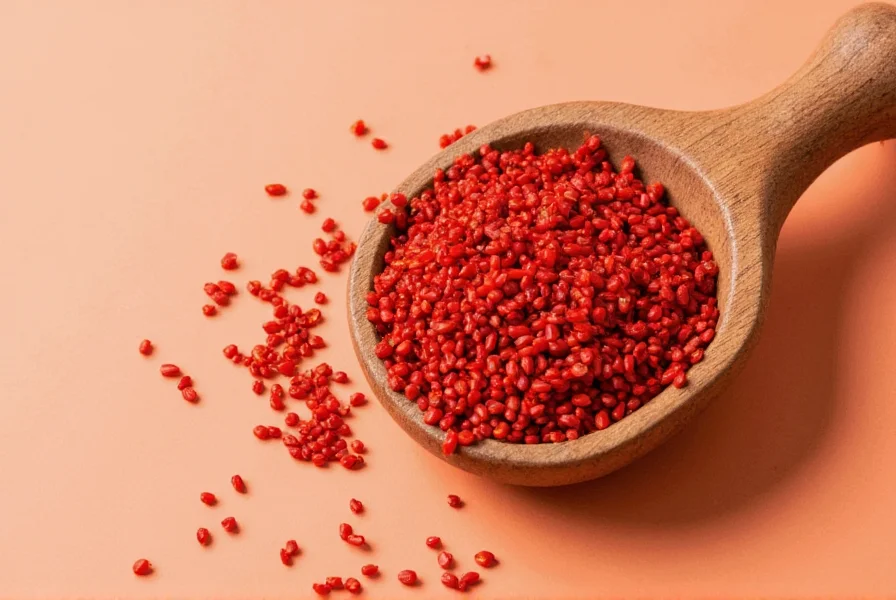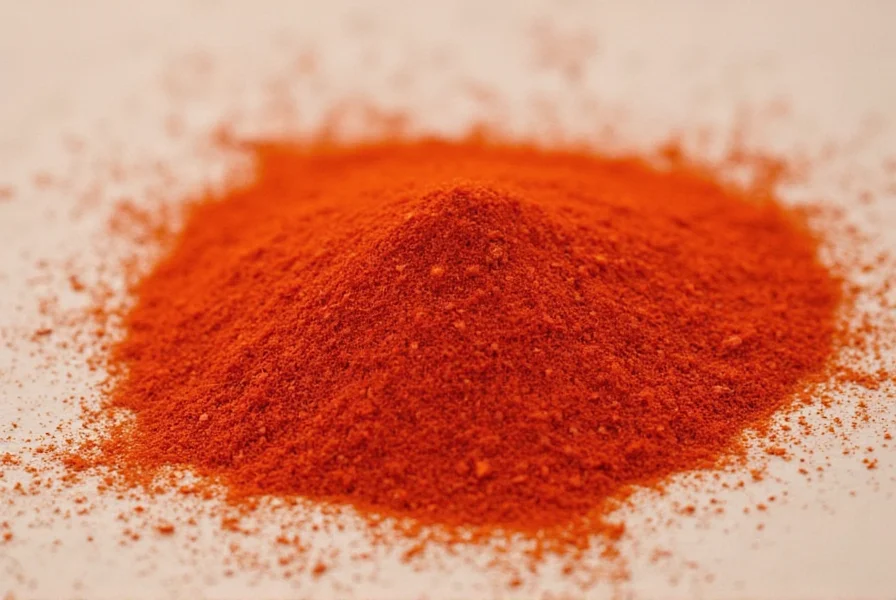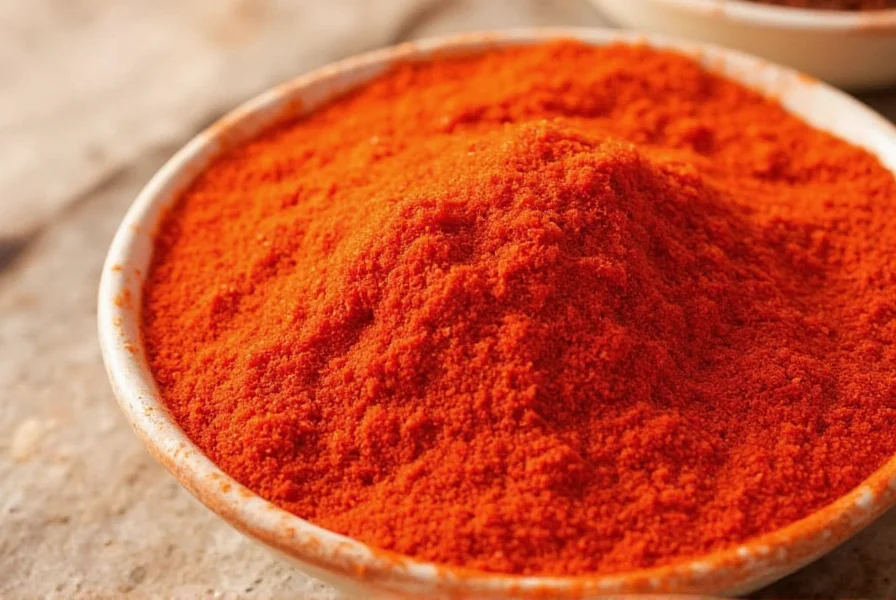The recommended daily intake of cayenne pepper for most adults is 1/8 to 1/2 teaspoon (0.5-2 grams) of cayenne powder, providing approximately 30-120mg of capsaicin. For culinary use, start with small amounts (1/8 teaspoon) and gradually increase as tolerated. Therapeutic doses should not exceed 2 grams daily without medical supervision. Individual tolerance varies significantly based on health status and previous exposure to spicy foods.
Understanding the proper daily cayenne pepper consumption guidelines is essential for safely enjoying its potential health benefits while avoiding adverse effects. As a potent spice with bioactive compounds, particularly capsaicin, cayenne requires careful dosage consideration whether used in cooking or as a supplement.
Understanding Cayenne Pepper and Its Active Components
Cayenne pepper (Capsicum annuum) contains capsaicin, the compound responsible for its heat and many of its studied health effects. The capsaicin concentration typically ranges from 0.1% to 1% in dried cayenne powder. When evaluating how much cayenne to take daily, it's crucial to understand that measurements differ based on form:
- Dried powder: 1 teaspoon = approximately 2 grams
- Fresh peppers: 1 medium cayenne pepper = about 4-5 grams
- Standardized supplements: Typically 30-120mg capsaicin per dose
These variations explain why recommended cayenne pepper dosage per day must account for the specific form being consumed. The same volume of fresh pepper versus concentrated extract delivers significantly different capsaicin levels.
Scientific Basis for Daily Cayenne Pepper Recommendations
Research on cayenne pepper dosage comes from multiple clinical studies examining its effects on metabolism, pain management, and digestion. A comprehensive review published in the Journal of Medicinal Food analyzed multiple trials and found that:
| Study Duration | Effective Capsaicin Range | Equivalent Cayenne Powder | Observed Benefits |
|---|---|---|---|
| 4-8 weeks | 30-60mg daily | 0.5-1g (1/4-1/2 tsp) | Metabolic boost, modest weight management |
| 2-12 weeks | 60-120mg daily | 1-2g (1/2-1 tsp) | Pain relief, improved circulation |
| Single dose | 135mg+ | 2.5g+ (1+ tsp) | Increased side effects, limited additional benefits |
These findings support the current consensus on safe daily cayenne pepper intake for therapeutic purposes. The research indicates diminishing returns and increased risk of adverse effects beyond 120mg of capsaicin daily (approximately 2 grams of cayenne powder).

Factors Influencing Individual Cayenne Tolerance
Your personal optimal cayenne pepper daily amount depends on several factors that affect tolerance and response:
Previous Exposure to Spicy Foods
Regular consumers of spicy cuisine typically tolerate higher amounts. If you're new to capsaicin, begin with just 1/16 teaspoon (0.25g) daily and gradually increase over weeks. This approach to starting dosage for cayenne pepper minimizes gastrointestinal discomfort while allowing your body to adapt.
Health Conditions and Medications
Certain health conditions require modified cayenne pepper consumption limits per day:
- Gastrointestinal issues (IBS, ulcers): Limit to culinary amounts only (1/8 tsp or less)
- Blood thinning medications: Consult physician before therapeutic use
- Diabetes medications: Monitor blood sugar closely as cayenne may enhance effects
- High blood pressure: Start with lowest doses and monitor response
Purpose of Consumption
The appropriate daily cayenne dosage varies based on your goal:
- Culinary enhancement: 1/8 to 1/4 teaspoon per serving
- Digestive support: 1/4 teaspoon before meals
- Metabolic boost: 1/2 teaspoon daily, preferably with food
- Pain management: 30-120mg capsaicin (0.5-2g powder) divided doses
Recognizing and Managing Excessive Consumption
Understanding the signs of too much cayenne pepper daily is crucial for safe usage. Common symptoms of overconsumption include:
- Burning sensation in mouth, throat, or stomach that persists
- Heartburn or acid reflux
- Nausea or stomach cramps
- Diarrhea or digestive upset
- Increased heart rate or blood pressure
- Skin flushing or sweating
If you experience these symptoms, reduce your intake immediately. For severe reactions, discontinue use and consult a healthcare provider. The maximum safe daily cayenne limit for most adults shouldn't exceed 2-3 grams (about 1 teaspoon) without medical supervision.

Practical Guidelines for Safe Daily Consumption
Follow these evidence-based recommendations for incorporating cayenne pepper into your routine:
Gradual Introduction Protocol
For those new to therapeutic cayenne use, implement this cayenne pepper daily intake schedule:
- Week 1: 1/16 teaspoon (0.25g) once daily with food
- Week 2: 1/8 teaspoon (0.5g) once daily with food
- Week 3: 1/8 teaspoon twice daily with meals
- Week 4: 1/4 teaspoon once or twice daily as tolerated
- Maintenance: Adjust to 1/4-1/2 teaspoon based on response
This gradual approach to how to take cayenne pepper daily allows your body to adapt while monitoring for any adverse reactions.
Optimal Timing and Food Pairing
Consuming cayenne with certain foods enhances tolerance and effectiveness:
- Always take with food to minimize gastric irritation
- Fat-containing foods (avocado, nuts, olive oil) help absorb capsaicin
- Morning or early afternoon consumption avoids potential sleep disruption
- Avoid taking on an empty stomach, especially when starting
- Consider mixing with honey or yogurt to moderate the heat
Special Considerations for Different Populations
Certain groups require modified cayenne pepper daily recommendations:
Older Adults
Those over 65 may have reduced tolerance due to changes in digestive function. Start with lower doses (1/16 teaspoon) and monitor for blood pressure changes, especially if taking cardiovascular medications.
Pregnant and Breastfeeding Women
Culinary amounts (up to 1/4 teaspoon daily) are generally considered safe, but therapeutic doses should be avoided without medical approval. Limited research exists on high-dose cayenne during pregnancy.
Children
Therapeutic cayenne use isn't recommended for children under 18. Culinary use should be minimal and age-appropriate (tiny amounts for older children only).
When to Consult a Healthcare Professional
Before establishing your regular cayenne pepper daily routine, consult a healthcare provider if you:
- Take blood thinners, diabetes medications, or blood pressure medications
- Have a history of stomach ulcers, GERD, or inflammatory bowel disease
- Experience persistent side effects even at low doses
- Plan to use cayenne for therapeutic purposes long-term
- Have uncontrolled hypertension or heart conditions
Professional guidance ensures your cayenne consumption per day aligns with your specific health profile and medication regimen.
Conclusion: Finding Your Optimal Daily Amount
The ideal daily cayenne pepper measurement varies by individual but generally falls within 1/8 to 1/2 teaspoon (0.5-2 grams) for most adults. Start low, increase gradually, and pay attention to your body's signals. Remember that consistency at a moderate dose typically yields better results than occasional high doses. For therapeutic use beyond culinary amounts, consult a healthcare provider to determine the appropriate cayenne pepper daily limit for your specific health goals and circumstances.
What is the maximum safe amount of cayenne pepper per day?
The maximum safe daily amount of cayenne pepper for most adults is 2-3 grams (approximately 1 teaspoon) of powder. Exceeding this without medical supervision increases the risk of gastrointestinal distress and other side effects. Therapeutic doses typically range from 0.5-2 grams daily, providing 30-120mg of capsaicin.
Can I take cayenne pepper every day?
Yes, you can safely consume cayenne pepper daily within recommended amounts (1/8 to 1/2 teaspoon). Regular consumption may provide cumulative benefits for metabolism and circulation. However, if you experience persistent digestive discomfort, reduce your intake or take periodic breaks. Always consult your healthcare provider before starting daily therapeutic use.
How much cayenne pepper should I take for weight loss?
For potential metabolic benefits related to weight management, research suggests 30-60mg of capsaicin daily (approximately 0.5-1 gram of cayenne powder). This is equivalent to about 1/4 teaspoon daily. Note that cayenne alone won't cause significant weight loss but may modestly support metabolism when combined with a healthy diet and exercise.
What happens if I take too much cayenne pepper in one day?
Consuming excessive cayenne pepper (more than 2-3 grams at once) can cause burning mouth/throat sensation, stomach pain, nausea, diarrhea, heartburn, and in some cases, increased heart rate or blood pressure. If you experience severe symptoms, drink milk or eat yogurt to neutralize the capsaicin, and discontinue use. Persistent symptoms warrant medical attention.
How do I measure cayenne pepper accurately for daily use?
Use proper measuring spoons for accuracy: 1/8 teaspoon = 0.6 grams, 1/4 teaspoon = 1.2 grams, 1/2 teaspoon = 2.5 grams. For therapeutic precision, consider using a digital kitchen scale that measures in grams. When starting, begin with 1/16 teaspoon (0.3 grams) and gradually increase as your tolerance develops.











 浙公网安备
33010002000092号
浙公网安备
33010002000092号 浙B2-20120091-4
浙B2-20120091-4